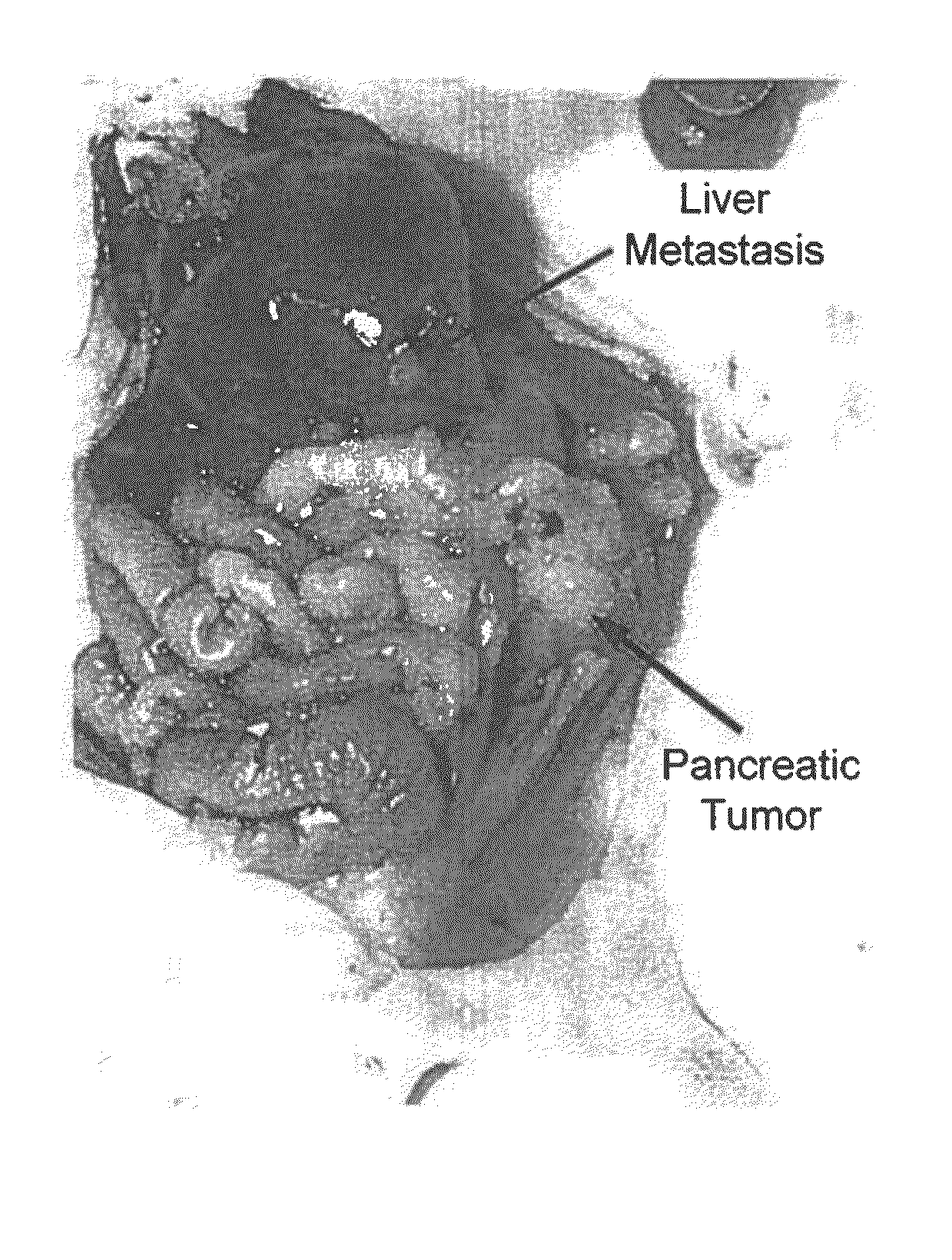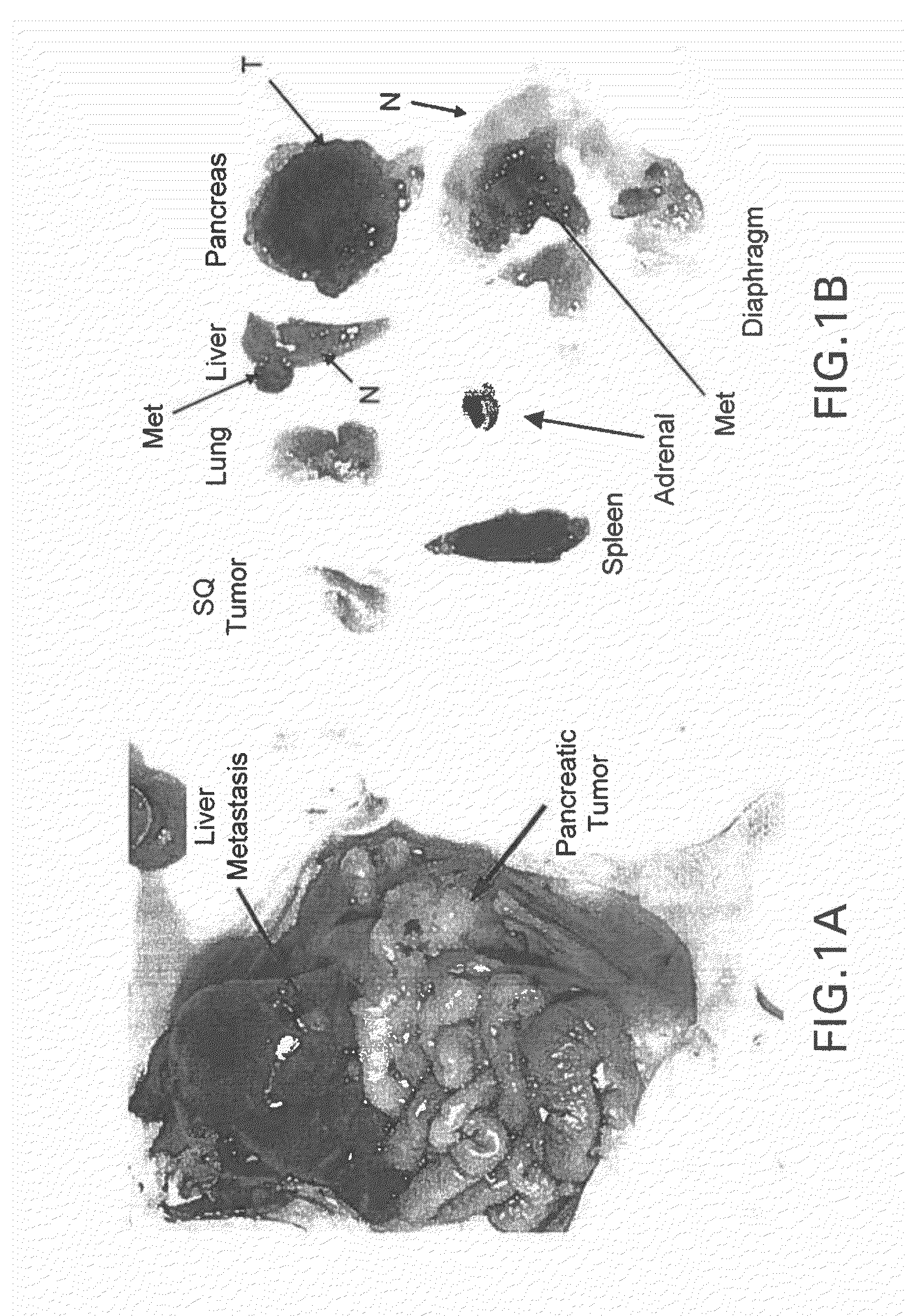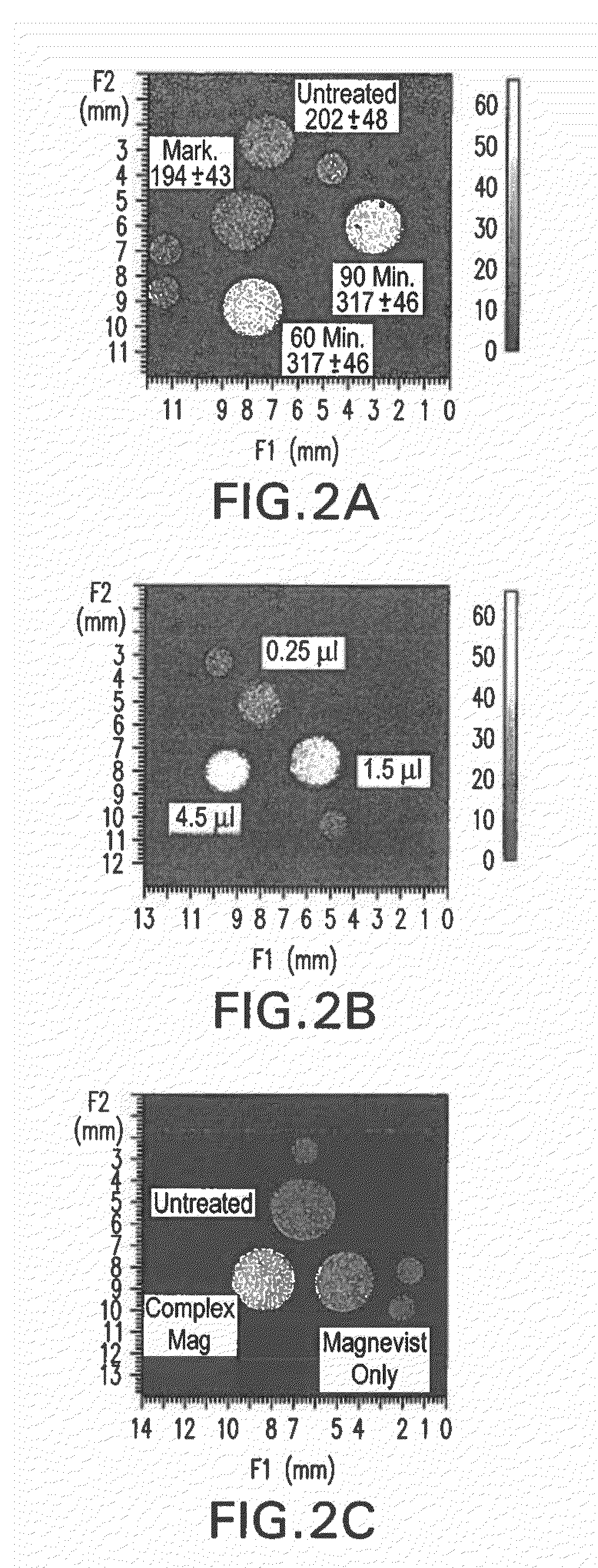Tumor-targeted nanodelivery systems to improve early MRI detection of cancer
a nano-targeted, cancer-targeted technology, applied in the field of drug delivery, cancer treatment and diagnosis, pharmaceuticals, etc., can solve the problems of glucose uptake, significant limitations of current contrast media, mainly based on glucose uptak
- Summary
- Abstract
- Description
- Claims
- Application Information
AI Technical Summary
Benefits of technology
Problems solved by technology
Method used
Image
Examples
example 1
Immunoliposome Complexes Comprising Magnevist®
Materials and Methods:
[0074]Cell Lines
[0075]Human lymphoblastic leukemia cell line K562 was obtained from the Lombardi Comprehensive Cancer Center Tissue Culture core facility. These suspension cells were maintained in RPMII640 supplemented with 10% Heat Inactivated FBS plus 2 mM L-Glutamine, and 50 μg / ml each of penicillin, streptomycin and neomycin. Human pancreatic cancer cell line CaPan-1 (obtained from the American Type Culture Collection (ATCC), 10801 University Boulevard, Manassas, Va. 20110-2209) was derived from a metastatic adenocarcinoma of the pancreas. It was maintained in Iscov's Modified Dulbecco's Medium containing 4 mM L-Glutamine and Sodium Bicarbonate, supplemental with 20% non-Heat Inactivated FBS, 2 mM L-Glutamine and 50 μg / mL each of penicillin, streptomycin and neomycin. Human prostate cancer cell line DU145 (ATCC, Manassas, Va.) was originally derived from a lesion in the brain of a patient with widespread metasta...
example 2
Comparison of Imaging in Different Cell Lines
[0118]FIGS. 8A-8H show improved MR imaging in two different models of cancer using the Ligand-HK-Liposome-Mag nanocomplex. Nanocomplexes for use in this Example were prepared using the same ratios and procedures as set forth in Example 1. Human breast cancer MDA-MB-435 (FIG. 8E-8H) or human prostate cancer cell line (DU145) (FIG. 8A-8D) cells were subcutaneously injected on the lower back, of female athymic nude mice. Free MAGNEVIST®, or the TfRscFv-liposome nanocomplex (scLip-Mag), or the TfRscFv-HK-liposome nanocomplex (scLip-HK-Mag) comprising the HoKc peptide, containing the same dose of MAGNEVIST® were i.v. injected (via the tail vein) into each of the three mice on three consecutive days. This amount of MAGNEVIST® is equivalent to twice the dose that would be administered to a human patient. The total volume of solution administered in all cases was 400 μl. A baseline scan was performed just prior to administration of both nanocompl...
example 3
Comparison of Dynamic MRI Scans of Subcutaneous PANC-1 Tumors after Systemic Injection of Free (Uncomplexed) or TJRScFv-Lip-MAGNEVIST®
[0120]The following experiments were performed to compare the rate and level of uptake and washout between free (uncomplexed) and TfRscFv-Lip-Mag in tumors after systemic delivery. Subcutaneous xenograft tumors of PANC-1 were induced in female athymic nude mice by injection of 1 to 2×107 PANC-1 cells suspended in MATRIGEL™ collagen basement membrane matrix (BD Biosciences). Approximately 2.5-3 weeks later, the animals were used for imaging. Cationic liposome (DOTAP:DOPE) was prepared by the ethanol injection method as previously described (see U.S. Published Patent Application No. 2003 / 0044407; Xu L, et al., Molecular Cancer Therapeutics 1:337-346 (2002) the disclosures of each of which are incorporated herein by reference). The targeting moiety used in these studies is the anti-transferrin receptor single chain antibody fragment (TfRscFv).
[0121]To en...
PUM
 Login to View More
Login to View More Abstract
Description
Claims
Application Information
 Login to View More
Login to View More - R&D
- Intellectual Property
- Life Sciences
- Materials
- Tech Scout
- Unparalleled Data Quality
- Higher Quality Content
- 60% Fewer Hallucinations
Browse by: Latest US Patents, China's latest patents, Technical Efficacy Thesaurus, Application Domain, Technology Topic, Popular Technical Reports.
© 2025 PatSnap. All rights reserved.Legal|Privacy policy|Modern Slavery Act Transparency Statement|Sitemap|About US| Contact US: help@patsnap.com



